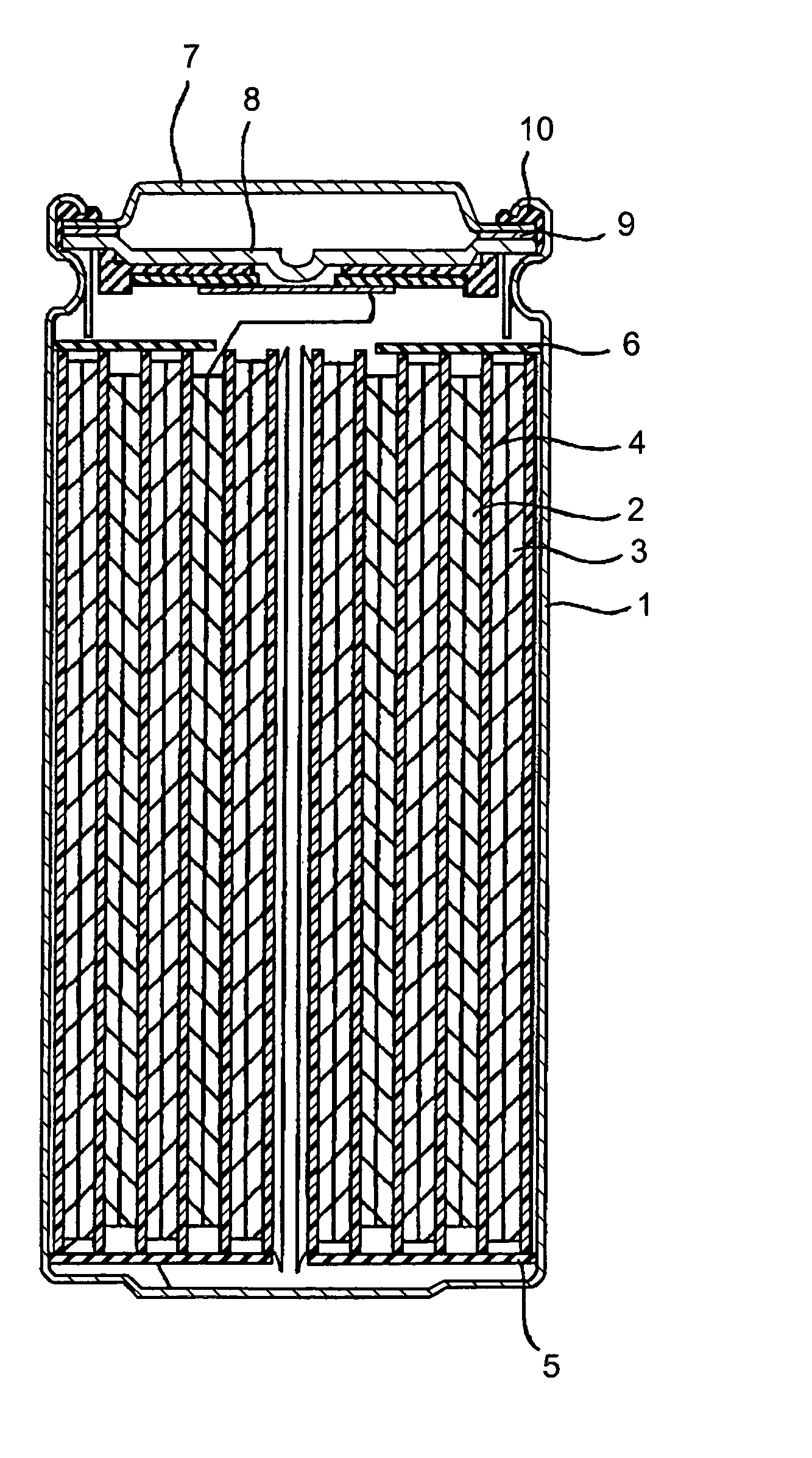Positive electrode active material and non-aqueous electrolyte secondary cell
a technology of active materials and active materials, applied in the manufacture of cell components, final product details, cell components, etc., can solve the problems of degrading high temperature operation properties and other problems, and achieve the effects of increasing internal electrical resistance, and reducing ionic conductivity and electronic conductivity
- Summary
- Abstract
- Description
- Claims
- Application Information
AI Technical Summary
Benefits of technology
Problems solved by technology
Method used
Image
Examples
example 1
[0069] First Lithium Transition Metal Composite Oxide
[0070] An aqueous solution containing Ni and Mn at molar ratios of 0.75 and 0.25, respectively, formed by using commercially available nickel nitrate and manganese nitrate was dripped to an aqueous ammonium solution while being sufficiently stirred, thereby forming a composite hydroxide. This composite hydroxide was mixed with lithium hydroxide and was fired at 850° C. for 10 hours under an oxygen flow, followed by pulverization, thereby forming a powdered lithium-nickel-manganese composite oxide which was the first lithium transition metal composite oxide.
[0071] In addition, when the first lithium transition metal composite oxide thus obtained was analyzed by atomic absorption spectrometry, a composition represented by LiNi0.75Mn0.25O2 was identified. Furthermore, when the grain diameter was measured using a laser diffraction method, the average grain diameter was 12 μm. In addition, when X-ray diffraction measurement was perfo...
example 2
[0091] A non-aqueous electrolyte secondary cell was formed in the same manner as that in Example 1 except that the first composite oxide and the second compound oxide were mixed together so that a weight ratio A / B of 80 / 20 was obtained. Subsequently, as was the case in Example 1, the cycle retention ratio at 50° C. and the retention ratio at large current discharge were measured.
example 3
[0092] A non-aqueous electrolyte secondary cell was formed in the same manner as that in Example 1 except that the first composite oxide and the second compound oxide were mixed together so that a weight ratio A / B of 30 / 70 was obtained. Subsequently, as was the case in Example 1, the cycle retention ratio at 50° C. and the retention ratio at large current discharge were measured.
PUM
| Property | Measurement | Unit |
|---|---|---|
| grain diameter | aaaaa | aaaaa |
| average grain diameter | aaaaa | aaaaa |
| average grain diameter | aaaaa | aaaaa |
Abstract
Description
Claims
Application Information
 Login to View More
Login to View More - R&D
- Intellectual Property
- Life Sciences
- Materials
- Tech Scout
- Unparalleled Data Quality
- Higher Quality Content
- 60% Fewer Hallucinations
Browse by: Latest US Patents, China's latest patents, Technical Efficacy Thesaurus, Application Domain, Technology Topic, Popular Technical Reports.
© 2025 PatSnap. All rights reserved.Legal|Privacy policy|Modern Slavery Act Transparency Statement|Sitemap|About US| Contact US: help@patsnap.com


